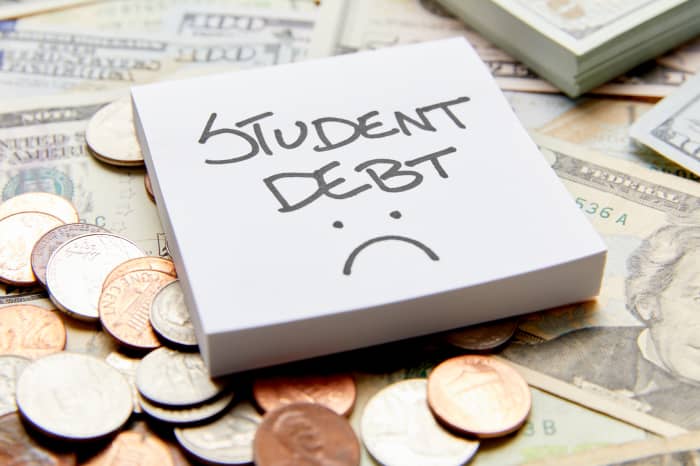‘This feels very unfair.’ I’m 73 and worked full-time in education. Over 17 years, I made only one late payment on my student loans. I still owe $12K. Can you help?

Question: I’m 73 years old. I took out student loans in 1999 and consolidated in 2004. I have made only one late payment in the 17 years I’ve repaid. I worked full time at two public universities from graduation in 2001 to retirement 2014. After applying for loan forgiveness, I was notified that payments made before 2007 do not count. The payments I’ve made in retirement do not count. I have a $12,000 balance. This feels very unfair after 17 years of no missed payments and only one late payment. Do you have any advice?
Struggling with student loan or other debt? Email chill@marketwatch.com.
Answer: “You can, seemingly, do everything right — work in public service and make your payments — and still not get forgiveness due to the red tape inherent in the system,” says Anna Helhoski, NerdWallet’s student loan expert. For those unfamiliar, the Public Service Loan Forgiveness (PSLF) program forgives the remaining balance on direct loans after 120 qualifying monthly payments have been made under a qualifying repayment plan — but even the Department of Education itself notes that this program has had flaws: “The Public Service Loan Forgiveness (PSLF) Program is an important — but largely unmet — promise to provide debt relief to support the teachers, nurses, firefighters, and others serving their communities through hard work that is essential to our country’s success,” it writes.
However, “there are fixes in place right now to attempt to remedy some of the program’s inadequacies,” says Helhoski. Indeed, in October, the department announced a series of changes that could help borrowers. Here’s a recap: “We will offer a time-limited waiver so that student borrowers can count payments from all federal loan programs or repayment plans toward forgiveness. This includes loan types and payment plans that were not previously eligible. We will pursue opportunities to automate PSLF eligibility, give borrowers a way to get errors corrected, and make it easier for members of the military to get credit toward forgiveness while they serve.” Read more here.
Contact your federal loan servicer and explain your situation all over again, advises Andrew Pentis, certified student loan counselor and education finance expert at Student Loan Hero. But note that unfortunately, it’s possible that you might not have your remaining balance wiped away. “That’s because you can still only receive credit for payments made after 2007 and you still need to hit the 120-payment threshold. Another personal stumbling block is if you made payments while in retirement and not working full-time. Those payments would still not count toward the 120-payment requirement for PSLF,” says Pentis.
Usually, in order to get your debt discharged through Public Service Loan Forgiveness, you must make payments every month over a period of roughly 10 years, while working full-time for a qualifying, public service employer, such as the government or a public university. “There are a ton of caveats in this process that can lead to ineligibility. You must have a direct loan, for example, which means you usually have to consolidate multiple loans into one loan and all payments made prior to consolidation are ineligible for PSLF. You also have to enroll in income-driven repayment, which will reset your payment timeline, which means all payments made prior to enrollment are ineligible for PSLF,” says Helhoski. Note that some of the qualified repayment plan rules have been temporarily suspended, as the government explains here: “Now, for a limited period of time, borrowers may receive credit for past periods of repayment that would otherwise not qualify for PSLF.” See details here.
The so-called Temporary Expanded Public Service Loan Forgiveness passed under a March 2018 federal spending plan and included a $350 million pot for borrowers who otherwise met conditions for PSLF, but were mistakenly enrolled in the wrong repayment plan. And as discussed above, recently, a temporary waiver was put in place to make it easier to count previously ineligible payments. “This means borrowers can get their loan payments to count toward PSLF even if they were made on the wrong type of loan, were previously consolidated, made in the wrong repayment plan, made late or were on pause while a borrower was on active duty in the military,” says Helhoski. In this case, it would make sense to call the issuer and see if you’re able to qualify.
What’s more, Helhoski says borrowers can consolidate their student loans through the federal student aid site and submit the PSLF form. If all of your $12,000 payments haven’t been consolidated, you can combine multiple federal loans into one loan and while it may lower your payments, your interest amount will increase. “But it’s available for a limited time only — until the end of October 2022,” says Helhoski.
Don Grant, a certified financial planner at Fortis Advisors, recommends preparing an email to Federal Loan Servicing that requests the Department of Education reconsider your eligibility for Public Service Loan Forgiveness. “Include the same name under which you submitted the PSLF application and date of birth in the email and send it to TEPSLF@myfedloan.org,” says Grant.
Though the PSLF program has had many problems, Grant says, “I would highly encourage her to reapply and stick to it. It’s been reported that many qualified borrowers have been denied, but changes and improvements have been made that were designed to clear more applicants and provide debt relief.”
*Questions have been edited from brevity and clarity.



